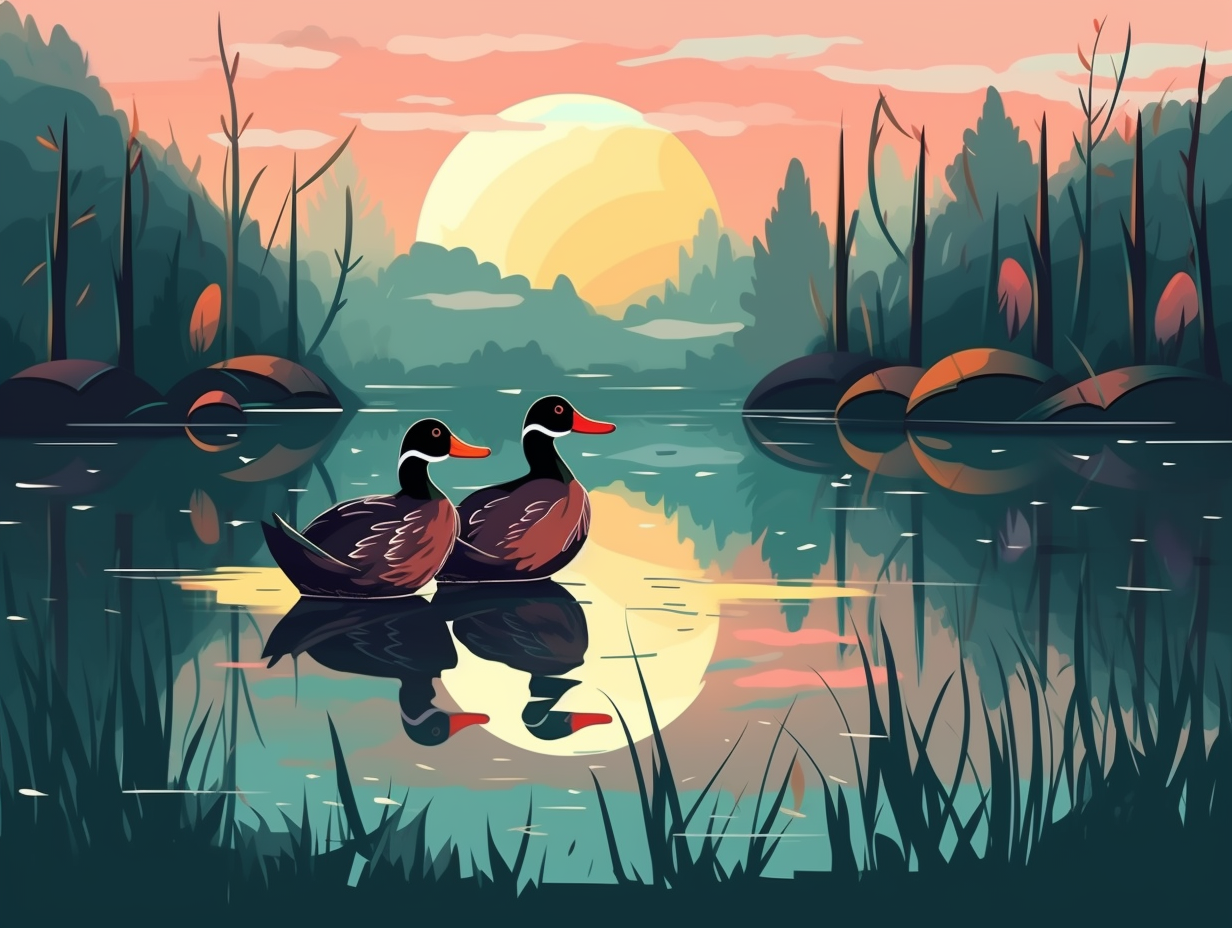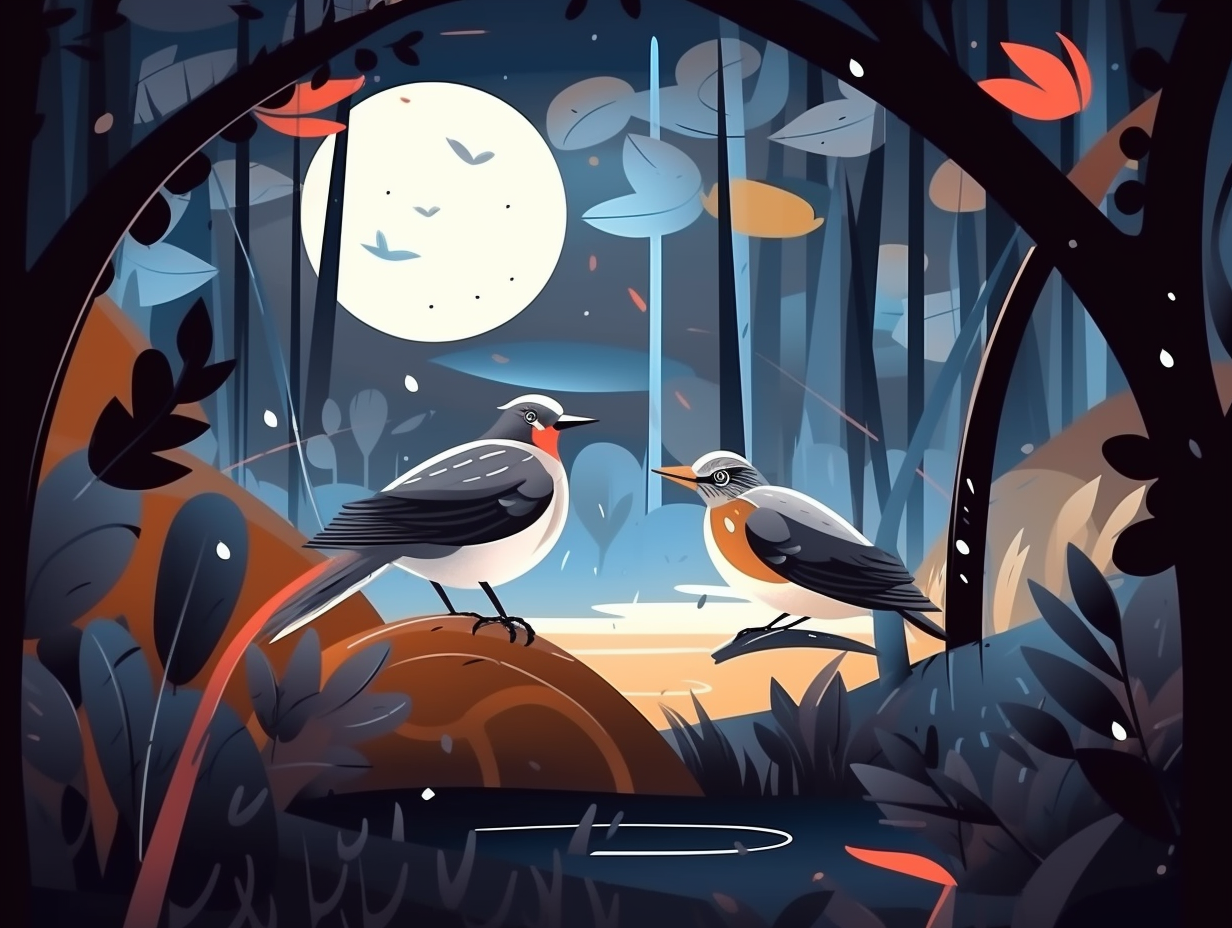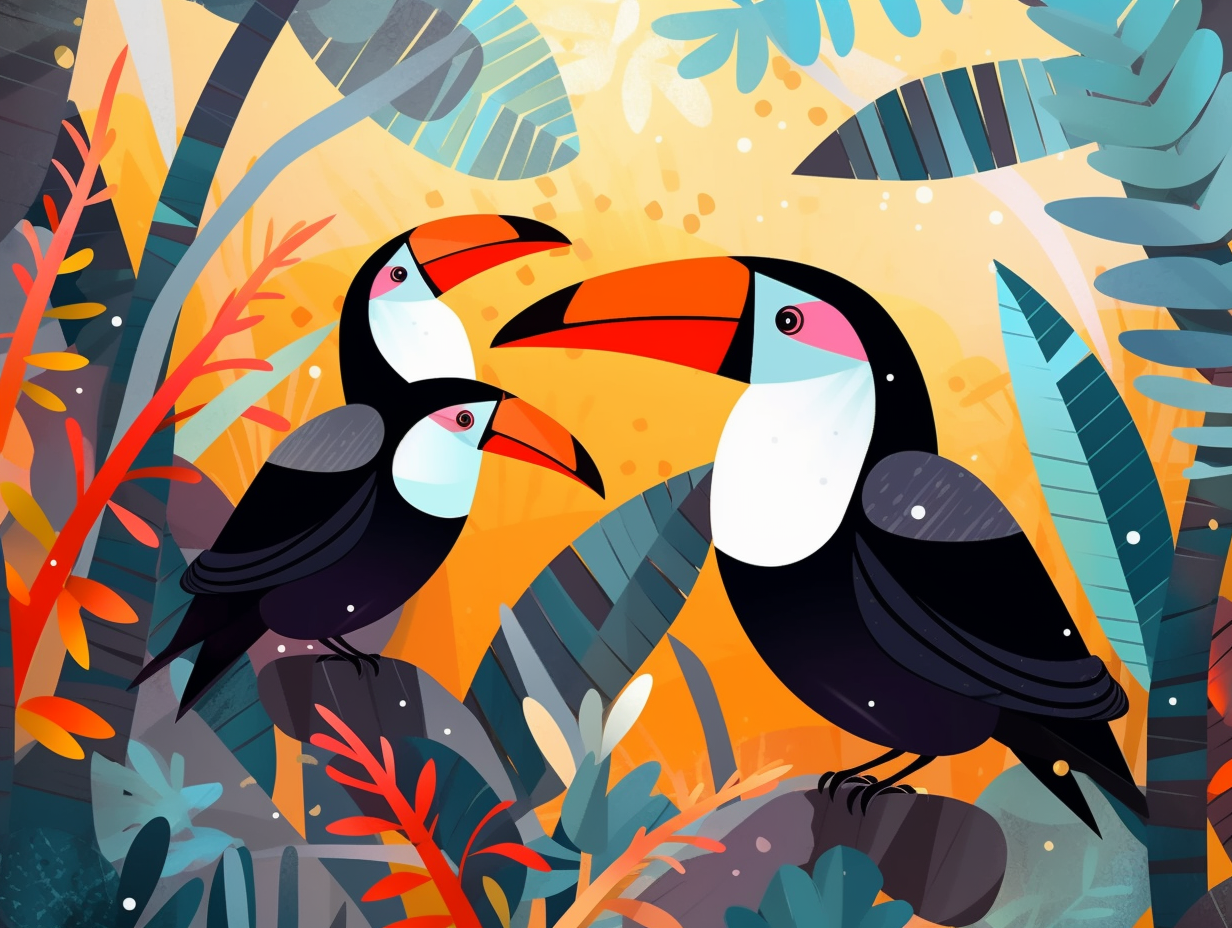Discover the Quirky World of Ducks: Top 21 Fun Facts You Never Knew!

1. Duck Accents
It seems ducks are quacking up to be quite the linguists, as they delight in flaunting accent variations as diverse as their dazzling plumage: researchers from Middlesex University discovered that London ducks boast rougher vocal timbres, while their Cornish cousins quack to a more leisurely and elongated rhythm, indicating ducks have distinct communication patterns influenced by location or upbringing.
Source => languagetraining.com
2. Only Female Ducks Quack
Ladies and gentle-ducks, it's time to bust a Bill-myth: only female ducks quack, while their male counterparts produce raspier, more muted sounds, proving that it takes two to quack in the duck world.
Source => backyardsidekick.com

Did you know that mallard ducks can zoom through the sky at impressive speeds of up to 55 miles per hour? Meet the "Duck Lightning McQuack" of the bird world! 🦆💨
=> Fun Facts about Mallard-Ducks
3. Ducks' Advanced Touch Receptors
In a world where "mud-slinging" is reserved for political campaigns and internet trolls, ducks have managed to turn muddy water into their very own all-you-can-eat buffet: Equipped with bills containing mechanosensory corpuscles similar to primates' touch-sensitive skin, ducks have evolved to detect and forage for food in murky waters using advanced touch receptors, even before they hatch out of their shells!
Source => pnas.org
4. Sunbathing Ducks
You may think ducks and chickens are just winging it through life, but these feathery friends are actually quite the sunbathers, putting beach-goers to shame: Ducks and chickens need direct sunlight for essential vitamin D production, which is crucial for healthy bones, nervous system function, and egg production in females, or else they might end up in some seriously scrambled situations!
Source => vetstreet.com

5. Ducks as Eco-Warriors
Behold the mighty duck, nature's eco-warrior in a fluffy feathered suit: These quacktastic creatures help maintain balance in ponds by munching on fish, amphibians, and invertebrates, nibbling away at invasive algae and weeds, and moonlighting as transport service for plants and microbes. Just like a feathery superhero, their environmental escapades keep freshwater ecosystems swimmingly splendid!
Source => pondinformer.com
6. Muscovy Ducks: Insect Terminators
Step aside, superheroes – the true vigilante of insect control has arrived, and it quacks: Muscovy ducks are nature's tick terminators, efficiently reducing tick populations by gobbling them up, along with other pesky insects like mosquitoes, roaches, and maggots, all while keeping your yard and garden pesticide-free.
Source => beautyofbirds.com
7. Unique Duck Bills
Ducks have their bills in order, quite literally, like an Avian IRS with specialized mouthparts to feast on their favorite treats: each species of duck boasts a uniquely shaped and sized bill tailored to snag the perfect meal, from serrated fish-gripping mergansers to the shovel-like scoops of the northern shoveler, sifting through seeds and invertebrates like a utensil from Mother Nature's cutlery drawer.
Source => ducks.org
8. Ducks' Aerodynamic Swagger
Whoever said ducks are "sitting" ducks never gave them due credit for their aerodynamic swagger: Dabbling ducks flaunt lower aspect ratio wings to waltz through lofty foliage, while diving ducks sport higher aspect ratio wings, empowering them with aerial prowess.
Source => outforia.com
9. Ducks' Unsinkable Feathers
Ever pondered the secret to a duck's unsinkable swagger? They've got oil in their tank (literally!): Beneath their feathery behinds lies the uropygial gland, pumping out oils that coat their feathers, creating a water-repellent shell that keeps them buoyant and prevents waterlogging - ensuring they remain the dapper, paddle-happy creatures we adore.
Source => animals.howstuffworks.com

10. The Fashionable Duck Down
Who says ducks don't have a "quacktastic" sense of fashion? They're rocking nature's finest and fluffiest thermal wardrobe, keeping them toasty in even the iciest of ponds: Ducks rely on their down feathers to stay warm, utilizing the air pockets trapped within to insulate against the cold, making these marvelous plumes the ultimate cozy fashion statement.
Source => chamonixcollection.com
11. Ducks' Water-Repelling Plumage
Guess what waddled its way into the wardrobe department of nature's waterproof fashion show? That's right, it's those fabulous feather-friends, the ducks! Here comes the quack parade: these savvy swimmers depend not only on their feathery ensembles for soaring the skies, but also for insulation purposes. To keep their feathery fluff waterproof and ready to take on the wettest catwalks, ducks possess a handy oil gland at their tail's base, secreting the perfect oil for maintaining their chic, water-defying plumage.
Source => ducks.org
12. Homing Ducks vs. Frequent Fliers
Ducks seem to have an eggscruciating time deciding whether to be a homing pigeon or a frequent flier: Canvasbacks have up to a 75% homing rate, often nesting in the same "ducky duplex" year after year, while blue-winged teal prefer more of a "try before they fly" approach with only 5 to 15% returning to their former nest. Geese, on the other paw, are committed homebodies, with mate pairs and family units returning to the same breeding area together each year.
Source => ducks.org
13. Ducks' Stealth Hearing
Who would have guessed that our friendly, quacking companions are secret masters of eavesdropping, despite not having a single ear to show for it? We can't help but wonder if they'd provide useful surveillance at the next pond-side gossip session! Alas, the mystery unravels: ducks may not possess external ear structures, but the unique oval shape of their heads allows them to identify the source of a sound by measuring the loudness in both ears and determining its position; above or below them. So don't underestimate a duck's uncanny listening abilities!
Source => birdnote.org
14. Ducks: James Bond of Bird Vision
Introducing the James Bond of the bird world: ducks, boasting super-spy vision that allows them to see 2.5-3 times better than humans, detect motion with impressive precision, and even see ultraviolet light! Sadly, their night vision isn't quite so debonair: but worry not, as it's perfectly tailored for top-secret, twilight adventures.
Source => tyrantfarms.com

15. Ducks Sleep with One Eye Open
Ducks have clearly mastered the art of sleeping with one eye open, giving a whole new meaning to the phrase "keeping an eye out for danger": These feathery snoozers can engage in "unihemispheric" sleep, allowing one half of their brain to rest while the other stays alert for predators, ensuring their safety as they grab some zzz's – and they can react to threats in a mere blink (or rather, half a blink) of an eye, in under a fifth of a second!
Source => science.org
16. Ducks' Rapid Swimming
Who knew the "quackstroke" could give Olympic swimmers a run for their money: ducks are actually swift swimmers, clocking in at speeds of up to 6 miles per hour, making aquatic life their wheelhouse while remaining nimble on land.
Source => thcsnguyenthanhson.edu.vn
17. Ducks' Natural Waterproof Feathers
Move over, waterproof mascara: ducks have got you beat with their naturally waterproof feathers! Not just a fashion statement, these "aqua-excluders" are both a lifesaver and a snack-hunter: Ducks possess unique feathers that secrete a special oil for waterproofing, allowing them to regulate their body temperature, float with ease, and even dive underwater for food without getting soaked.
Source => en.wikipedia.org
18. Ducklings: Aquatic Soldiers
Ducklings: born to follow orders and fine feasters of flora! They're like tiny, aquatic soldiers marching through the pond: categorized as level 2 precocial young, these little quackers are equipped to follow momma duck and scavenge for their own grub right out of the egg. But fear not, they still need some parental love and protection for about 50-60 days until they earn their wings and can fly off into the sunset.
Source => web.stanford.edu
19. Ducks' Flirtatious Dance Moves
In the great game of "Duck, Duck, Goose," ducks deploy some seriously flirtatious moves, moonwalking and shimmying their way to love's dancefloor: Various duck species exhibit unique courtship displays, such as the Mallard's Head-Pumping and the Common Goldeneye's Head-Throw-Kick, to woo their desired partners during mating season.
Source => academy.allaboutbirds.org
20. Duck Dating Selection Criteria
In the cutthroat world of duck dating, it's not all about flaunting a flashy feather outfit or busting out some funky dance moves at the pond discotheque: Female ducks actually select their mates based on criteria like courtship displays, plumage quality, and vigorous behavior, which may be indicative of better genes, debunking the myth that they solely focus on the bright colors or patterns of the male's attire.
Source => ducks.org
21. Ducks: Eye Candy
They say even a one-eyed man can rule the roost, but ducks surely take the cake for real eye candy: Ducks sleep with one eye open, allowing them to stay vigilant for threats while still catching some shut-eye, and even showcasing some impressive cranial multi-tasking by leaving half their brains awake when snoozing in groups.
Source => a-z-animals.com
Related Fun Facts




















